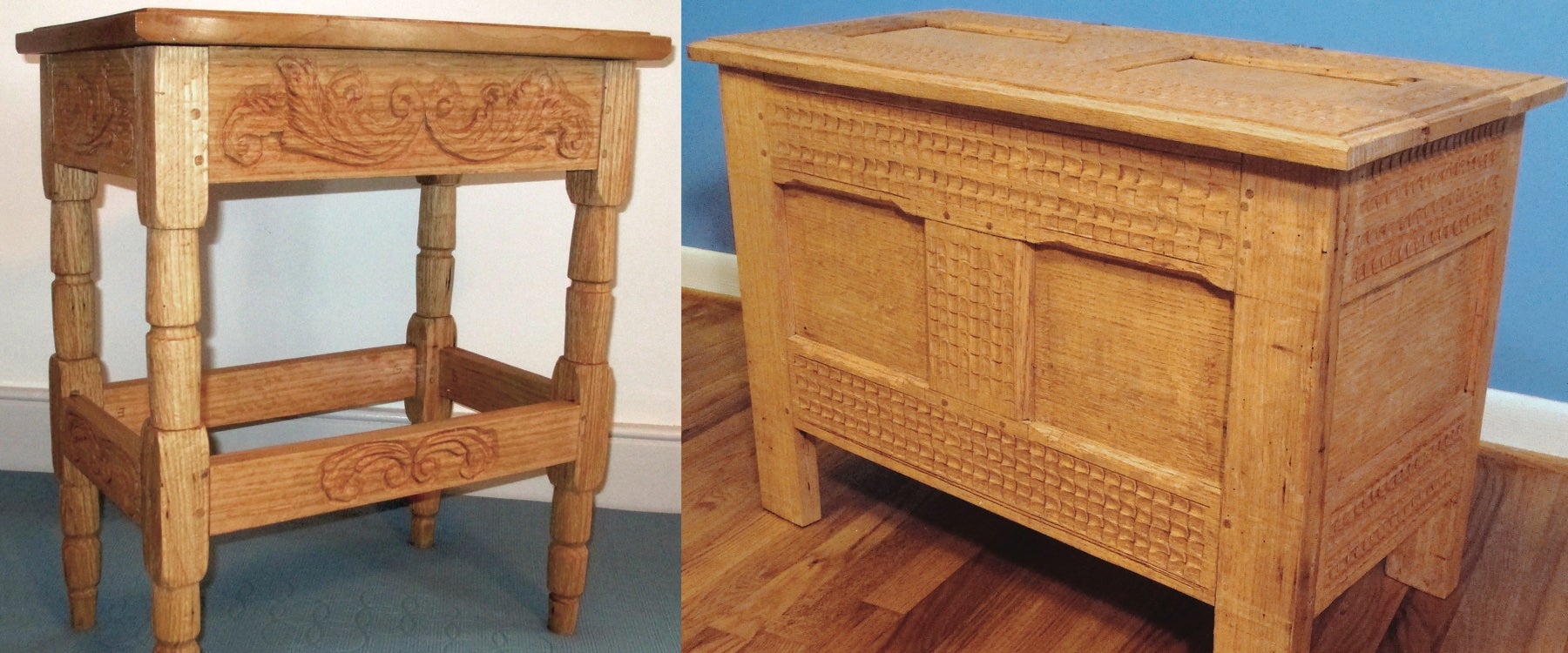“Early American Woodworking: Exploring the Natural Beauty of Wood” by Dr. Joseph Chalovich
About the Artist
 As a child, Joseph Chalovich wanted to become a scientist or a carpenter. Growing up with a family full of builders, painters, woodworkers, and craftsmen, he was surrounded by skill and creativity. After witnessing their accomplishments and seeing they were indeed obtainable, his confidence grew as he sought to discover his own talented expression of art.
As a child, Joseph Chalovich wanted to become a scientist or a carpenter. Growing up with a family full of builders, painters, woodworkers, and craftsmen, he was surrounded by skill and creativity. After witnessing their accomplishments and seeing they were indeed obtainable, his confidence grew as he sought to discover his own talented expression of art.
Dr. Chalovich became interested in American woodworking with traditional hand tools when his mother, Madge, moved in after his father died. Madge enjoyed watching Roy Underhill’s Woodwright Shop on PBS because “he makes things out of real wood.” Chalovich replicated several items that Roy demonstrated and discovered that he needed different skills and a source of freshly fallen “green” wood. Hurricane Floyd provided fallen trees in his yard as well as the yards of fellow friends for his first pieces of furniture. Over the years, he continued his craft and took courses to learn more. He also obtained period hardware from a blacksmith.
Early American woodworking requires a mix of hard labor and creativity. 17th-century American and European furniture is well constructed and did not usually require nails or screws; glue was optional, therefore, many pieces from that period survive. The work was often embellished with simple carving and the natural beauty of the wood was allowed to show.
“Each tree has its own character,” says Chalovich. “Experienced craftsmen told me to ask the tree what it wants to be and it took several years for me to appreciate that statement.” He claims he’s still learning how to read trees.
